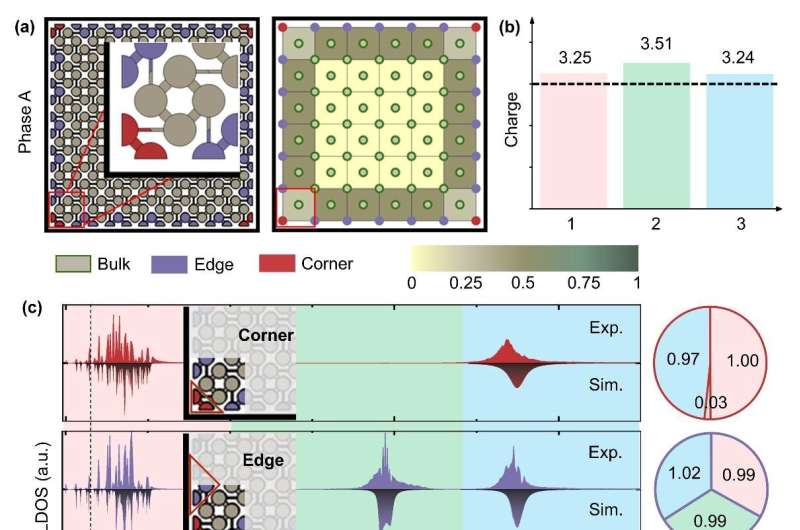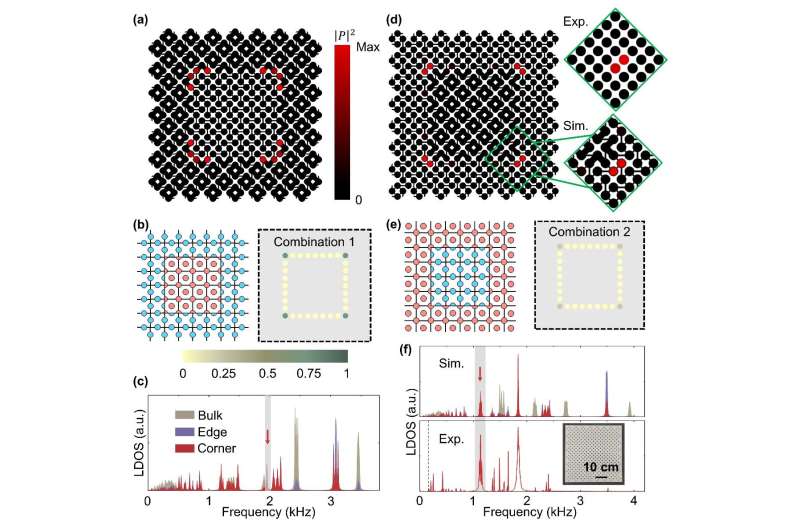Researchers reveal acoustic topological corner anomaly

Topological acoustics provides a new approach for manipulating acoustic waves using the novel wave transport phenomenon. In less than a decade, it has provided a series of promising new ideas for the directional control of acoustic field.
However, most of the existing studies analyze the topological properties of systems based on Berry curvature framework, which is no longer applicable to acoustic topological crystals with various complex crystalline symmetries. In addition, a large number of acoustic topological states merge in the bulk continuum due to the lack of intrinsic symmetries such as chiral symmetry and particle-hole symmetry, and thus cannot be detected or manipulated.
Recently, researchers from the Institute of Acoustics of the Chinese Academy of Sciences (IACAS), in collaboration with Wuhan University and South China University of Technology, constructed acoustic Wannier configurations by measuring spectral charges in phononic crystals (PCs), providing a quantized observable to detect the topological properties of acoustic artificial crystals.
The study was published in Science Bulletin on March 11.
They constructed two topologically distinct Wannier configurations in the two-dimensional (2D) PCs with four-fold rotation symmetry. For each phase, they integrated local density of states (LDOS) spectra over the spectrum band to obtain the spectral charges.

The resultant Wannier configurations of Phases A and B manifested fractional and zero corner charge, respectively. The measured fractional spectral charges could characterize topological corner anomaly, revealing the corner mode regardless of its frequency.
It is worth noting that the proposed PCs of Phases A and B do not require fine-tuned boundary compensations and are robust to the possible experimental deformations. Furthermore, the Wannier configurations in different phases are naturally combined to reproduce the corner modes in band gaps. Both the ordinary and the exotic phases can serve as the cladding layers in the combined phononic crystals, providing an anomalous route to engineering in-gap corner modes.
The proposed paradigm has promising applications in acoustic resonators with high-quality factors and acoustic energy harvesting, as well as other classical wave systems such as elastic waves and surface acoustic waves.
More information:
Peng Zhang et al, Observations of acoustic Wannier configurations revealing topological corner anomaly, Science Bulletin (2023). DOI: 10.1016/j.scib.2023.03.015
Citation:
Researchers reveal acoustic topological corner anomaly (2023, April 19)
retrieved 20 April 2023
from https://phys.org/news/2023-04-reveal-acoustic-topological-corner-anomaly.html
This document is subject to copyright. Apart from any fair dealing for the purpose of private study or research, no
part may be reproduced without the written permission. The content is provided for information purposes only.
For all the latest Science News Click Here
For the latest news and updates, follow us on Google News.

